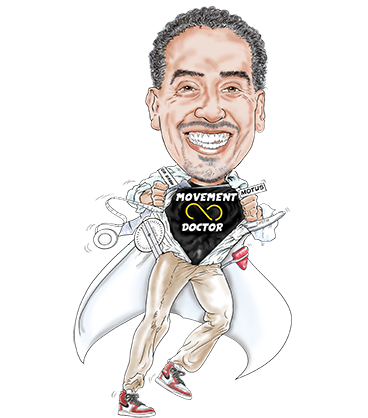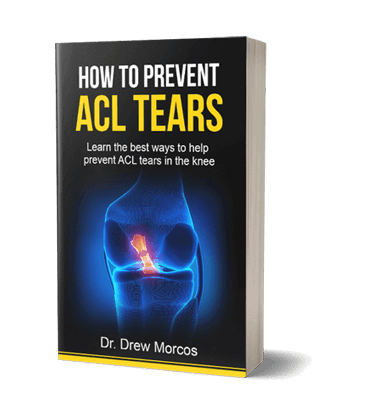There are many benefits to playing sports early on. This helps kids develop confidence, learn leadership and teamwork techniques, socialize and build great friendships, all whilst having fun. Studies have even found that a child’s active lifestyle increases their chances of achieving higher health. Considering these positive aspects there are definitely no disadvantages for participation in sports at an early age.
However, there is a lot of debate surrounding early specialization in youth athletes. Some experts believe that it is the key to success, while is blog post, we will explore both sides of the argument and try to come to a al for young athletes.

On one hand, early specialization is thought to help young athletes develop the skills and discipline needed to succeed in their chosen sport. By focusing on one sport from an early age, athletes can learn the specific techniques and tactics that they will need to compete at a high level. In addition, early specialization can help athletes build mental toughness and resilience, as they learn to cope with the pressure of competition and the disappointment of setbacks. Despite coaches and parents who believe that youth athletes should specialize in one sport at a young age there is no evidence to suggest that this is better for your body than playing many different sports.
On the other hand, early specialization can also lead to burnout, overuse injuries, and a lack of enjoyment. Young athletes who focus on one sport may become bored or disillusioned if they are not successful, and they may be more likely to quit altogether. In addition, early sport specialization can increase injury risk, as young athletes’ bodies are not yet fully developed and they may be more likely to overtrain.
In recent decades, the landscape of youth athletics has changed. Increased participation in competitive athletics has been seen over the past 50 years (National Federation of State High School Associations, 2016-2017). Another recent phenomenon is the increasing number of young athletes concentrating on a single sport. Sport specialization is often sought out by these young athletes due to sensationalized, highly successful athletes who specialize early, including elite athletes like Tiger Woods, Tara Lipinski, Venus and Serena Williams just to name a few. Additional influences towards early specialization include parents, coaches, and peers who often believe that sports specialization is needed to compete with other elite athletes at the highest level. Aspirations to continue playing beyond high school and the allure of an athletic scholarship may also be particularly motivating.
At this time, there is no evidence to suggest superior physiologic benefits to early specialization over diversified athletic participation. In contrast, a 2017 prospective study published in The American Journal of Sports Medicine, adds to the growing literature that sport specialization increases the risk of injuries for high school athletes although injury incidence varies based on athletic exposure. While athletes participating in a variety of sports have fewer injuries and play sports longer than those who specialize before puberty. Current evidence supports the delay of sport specialization for the majority of sports until after puberty (late adolescence, ~15 or 16 years of age). Delayed specialization will minimize the risks of injury and lead to a greater likelihood of athletic success.
Another important difference between young and mature athletes is that kids continue to grow. Changes in body weight, height and weight add extra pressure to the muscles, as well as the joints. Young athletes are often surrounded by cartilage growth in both growth plates and in musculotendinous insertions. Growth cartilage is exposed to multiple microtraumatic events. In baseball the commonest injury is Little League elbow and Little League shoulder. It is also an overuse injury of epiphyseal growth cartilages.
Early sports specialization has shown to be not only physically demanding but also mentally difficult. Athletic burnout, characterized by loss of motivation, lack of enjoyment, high perceived stress and anxiety, and poor stress coping skills, can occur with early specialization.
Diversification is the idea in sport that players should take part in as many sports as possible. The method involves children in multiple sports that emphasize play and no practice. This approach provides the perfect environment for you to develop a passion for sports to facilitate productive, structured practice.
The American Orthopaedic Society for Sports Medicine recommends several measures to prevent burnout and injury including avoiding overscheduling and excessive time commitments. The literature advises a minimum of 2-3 months off each year from their particular sport to avoid overuse, overtraining, and burnout and this “time off” can also be used to participate in other sports or activities (diversification).
Early sport specialization proved physically and psychologically challenging. Athletic burnout is often a consequence of early specialty in a particular sport. Burnout has an impact on sports performance as well and is likely to result in withdrawal or a dropout from activities once enjoyed by an athlete.
Early sports specialization may have some benefits, but it also has some drawbacks. Ultimately, the decision of whether or not to specialize should be made on a case-by-case basis, taking into account the individual athlete’s goals, abilities, and interests. Some athletes will thrive with early single-sport specialization, while others will be better off taking a more diversified approach. There is no “right” answer for every athlete; it all depends on the individual.
If you are a parent or coach of a young athlete, it is important to have a discussion about the pros and cons of early sports specialization before making any decisions. It is also important to remember that, even if an athlete does choose to specialize, they should still be encouraged to participate in other activities for fun and enjoyment as well as adequate rest from repetitive movements to reduce injury risk.
- Saicinen. Youth sports readiness: Predictive model for success. Physical education 47(2): 68-68 1992.
- Bryson Y. & B. J. Y. J. ‘Overuse traumas in youth sports: A view of the American Medical Society for Sports Medicine’. Clinical Journal of Sport 22 (1): 1-3, 2015. Stern, P.J.
- National Federation of State High School Associations. Participation Statistics. https://www.nfhs.org/ParticipationStatistics/PDF/2016-17_Participation_Survey_Results.pdf Accessed April 25, 2018.
- National Letter of Intent. Athletic Scholarships. Available at: https://www.nationalletter.org/documentLibrary/athleticScholarship.html. Accessed April 25, 2018.
- LaPrade RF, Agel J, Baker J, et al. AOSSM early sport specialization consensus statement. Orthop J Sports Med. 2016;4(4):2325967 116644241.
- McGuine, TA, et al. “A Prospective Study on the Effect of Sport Specialization on Lower Extremity Injury Rates in High School Athletes.” Am J Sports Med. 2017;45(12): 2706-2712.
- Malina RM. Early sport specialization: roots, effectiveness, risks. Curr Sports Med Rep. 2010;9(6):364–371.
- Jayanthi N, Pinkham C, Dugas L, Patrick B, Labella C. Sports specialization in young athletes: evidence-based recommendations. Sports Health. 2013;5(3):251–257.
- DiFiori JP, Benjamin HJ, Brenner JS, et al. Overuse injuries and burnout in youth sports: a position statement from the American Medical Society for Sports Medicine. Br J Sports Med. 2014;48(4):287–288.
- Mostafavifar AM, Best TM, Myer GD. Early sport specialization, does it lead to long-term problems? Br J Sports Med. 2013;47(17):1060–1061.
- Goodfer K, Gorley T, Lavallee D, Harwood C. Burnout in sport: a systematic review. Sport Psychol. 2007;21:127-151.
- Myer GD, Jayanthi N, Diffori JP, et al. Sport specialization, part I: does early sport specialization increase negative outcomes and reduce the opportunity for success in young athletes? Sports Health. 2015;7:437-442.






















